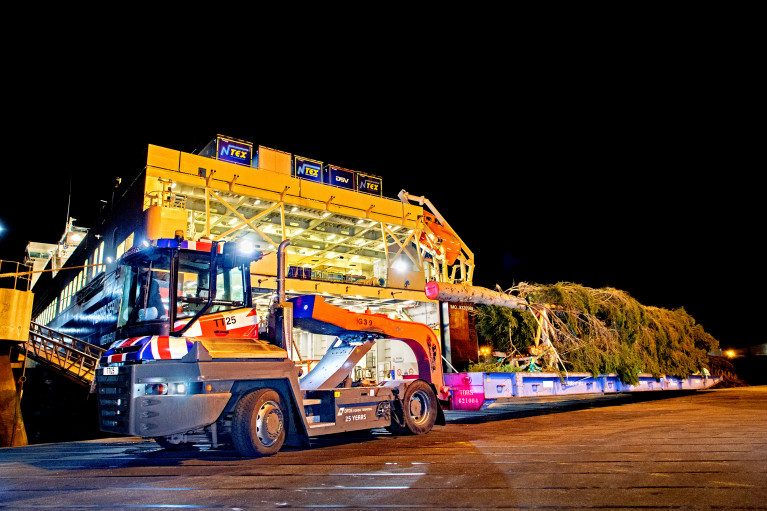Shipping giant DFDS which this date next month launches a new direct Ireland-mainland Europe ro-ro freight ferry route to bypass Brexit congestion, continued a decades old tradition in transporting from Norway a Christmas Tree to the UK, writes Jehan Ashmore
The operator based in Copenhagen, Denmark which has an extensive route network in Europe (in addition services to Turkey) includes a service to Associated British Ports (ABP) Port of Immingham which welcomed the arrival of the Trafalgar Square Christmas Tree.
Delivery of this unique cargo of a 23m tall Norwegian Spruce affectionately regarded by forestry workers as the "Queen of the Forest" was loaded onboard DFDS 340 truck-trailer capacity freighter Ficaria Seaways. The ferry with cabins for 12 accompanied drivers, sailed across the North Sea to the UK’s largest port by tonnage, handling around 46m tonnes of cargo.
The team at DFDS Seaways terminal in Immingham also welcomed the delivery of the UK's most famous festive tree is a token of gratitude from the people of Oslo and government of Norway, for Britain’s support during World War 2. The gift of the tree is in recognition of the UK's assistance of the Norwegian royal family which for five years lived as exiles in London.
The gift of a tree from the Nordic nation has been an annual tradition that began in 1947 and for the past 25 years the delivery has been handled by DFDS. This year marks the 73rd year of such commemorations. To put this timescale into perspective, Afloat has noted the Norwegian Embassy in the UK said it takes 60 -100 years for a tree to grow to about 21 meters.
So the Christmas tree for 2020 will exceed this height and stand proud in one of the most famous landmark and tourist attractions of the UK capital.
Following the tree's transportation by road to Trafalgar Square, preparations began for a 'virtual' lighting-up ceremony which is to take place tomorrow, Wednesday, 3rd December.
Decoration is in traditional Norwegian style and adorned with energy-efficient lights. As for the virtual ceremony, this is to feature performances from the Salvation Army, the Poetry Society and the St Martin-in-the-Fields Choir.































































